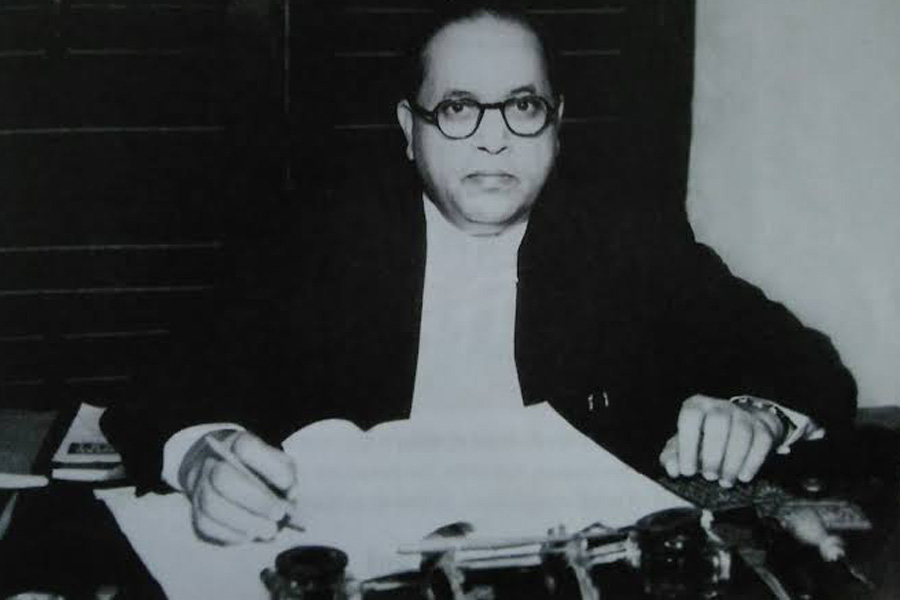On December 6, 1956, Ambedkar attained immortality. The whole country plunged into sorrow. Statesmen across the world expressed their grief and highlighted his greatness. Jawaharlal Nehru said that, “B R Ambedkar deserves to be remembered always by us because of his fight against social injustice; the great service that he had rendered in framing the constitution of India.”
On December 6, 1992, the Babri Masjid in Ayodhya was demolished. It was a leap ahead for the right-wing fundamentalist forces towards majoritarianism. The demolition of the mosque was a clear break from what our Constitution or freedom struggle stood for.
During the independence movement, Hindus and Muslims fought shoulder to shoulder against imperialists. The seeds of distrust and disharmony were sown in those days which resulted in the horrendous partition of the subcontinent. Even after that horrific event, India, its leaders, its constitution and above all the common people refused to accept religion as the demarcating line of society and instead chose tolerance, plurality and secularism as the binders of society.
The demolition of Babri Masjid on December 6, was yet another vulgar attempt to demonise the Muslims and paint them as the ‘outsider’. The demolition of the Babri Mosque was the execution of a long cherished plan of the legatees of Golwalkar and Hedgewar of casting India in the mould of a Hindu theocratic state.
On 6 December, it was not just an architectural structure or place of worship that got mutilated, rather history itself got mutilated, the wounds of which are still raw in the collective conscience of this country. It was an attempt to obliterate the legacy of Ambedkar, Periyar, Phule and Birsa Munda who fought stood for and fought for the principles of justice and equality.
Since their inception, the RSS and other Hindutva forces have maintained their commitment to the hierarchical division of society on the lines of religion and caste informed by Manu’s sense of purity and pollution. It may not have been a coincidence that the day they chose for the demolition was associated with one of the tallest crusaders against caste system and hierarchies.
December 6 marks the Mahaparinirvana of Babasaheb Bhimrao Ambedkar. As the students of Babasaheb, the oppressed of this country are marching ahead to ensure justice and equality, from political to social, while the RSS and other Hindutva forces are pushing the nation onto the path of exclusion, extermination and hierarchy. At the symbolic level, the right-wing forces attempted to undermine history and invisiblise the legacy of Ambedkar by marking December 6 as “Shaurya Diwas” to mark the demolition of Babri Masjid.
Unambiguously one may say that that every project undertaken by the Sangh Parivar is built upon violence, silencing and exclusion drawing from the majority religion whose sole caretakers they claim to be. They stand in opposition to the modern, secular ideas upheld by Ambedkar.
Having experienced the barbarity of Hinduism, Ambedkar was firm in his resolve that though he might have been born a Hindu he will never die as one. As the ultimate rebellion against the Brahminical violence, in 1935, Ambedkar rejected Hinduism and embraced Buddhism.
On the difficult path of achieving equality and social justice for all, Babasaheb Ambedkar conducted a thorough inquiry of all major religions including Islam, Christianity, Zoroastrianism and Buddhism before choosing a politically engaged version of Buddhism, called Navayana, as his faith. It can be inferred from his works that for him, religion was for the human and not vice-versa. For him the function of religion was the moral upliftment of an individual.
For the Sangh Parivar, it was always political mobilization against ‘others’. While Ambedkar visualized a ‘New Human’, purged from the impurities of caste, patriarchy and inequality, the Sangh Parivar on the other hand wished to hold on to them.
Dr Ambedkar reinterpreted Buddhism for modern times with the sole concern of creating a blueprint of society and societal structure based on mutual respect and equality as a direct opposition to the oppressive and rigid caste system sanctioned by Brahmanism. Fighting his crusade against the “division of labourers”, Ambedkar pushed for liberty. This liberty included social mobility for all sections of society which was to be achieved by inculcating constitutional morality, which was a secular and non-partisan principle.
The RSS and its affiliates are bereft of any idea of constitutionalism and uphold the fixated division of society in upper and lower castes as sanctified by Manusmriti. It should be kept in mind at all times that those who observe “Shaurya Diwas” and those who swear by Manusmriti are one and the same people, hell-bent on undoing Ambedkar’s efforts for creating a non-hierarchical society.
Observance of 6 December to remember the vision of Ambedkar is especially important in these times when the deeply problematic decision of the Supreme Court on the Ayodhya title suit has emboldened the Hindutva forces. It should be understood in the light of Ambedkar’s work and teachings that the fight to ensure justice shall be championed by the marginalised and oppressed.
Despite all the posturing done by the RSS and its ilk to try and recast Ambedkar as one among them, it is absolutely clear that the only interest the right-wing forces hold is to polarize the society and draw political/electoral gains. For this, co-option is the preferred methodology. Mere garlanding of Babasaheb’s statues is not fooling anyone. Each time portions regarding Ambedkar are deleted from school textbooks, the real face of the Brahmanical forces come out in the open.
Ambedkar’s mahaparinirvana is yet another occasion to renew our zeal and commitment to unwaveringly move forward in the path of resistance against the powers to be. His legacy and relevance is also an undying challenge to the reactionary and divisive forces in the country that seek to perpetrate hierarchy and humiliation in society. It is high time we recognise the power structures of caste, patriarchy, religious majoritarianism and thwart their attempts at distorting the legacy of Dr Ambedkar.
The demolition of Babri Masjid is a blot on the social, legal and constitutional history of India. The champions of that act are now at helm threatening everything Ambedkar stood for—liberty, equality and fraternity. As citizens of a secular republic, it is imperative that we know and understand the enormity of December 6 and draw hope and resistance in this collective fight to ensure equality and dignity for all.
(By arrangement with IPA)







